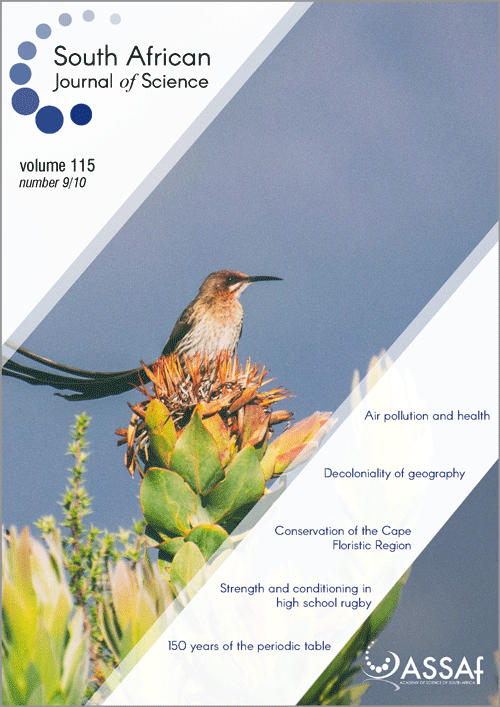Agricultural practices and their potential role in mycotoxin contamination of maize and groundnut subsistence farming
DOI:
https://doi.org/10.17159/sajs.2019/6221Keywords:
mycotoxigenic fungi, storage, mycotoxins, survey, South AfricaAbstract
Mycotoxigenic fungi are common pathogens of maize and groundnuts; they produce mycotoxins which reduce the yield and quality of these grain crops. Numerous agricultural practices including crop rotation and storage methods have been shown to impact mycotoxin accumulation. Therefore, the farming and storage practices in maize and groundnut subsistence farming systems in Pongola, Vryheid, Jozini, Manguzi and Mbazwana Districts of northern KwaZulu-Natal (South Africa) were surveyed to determine their potential role in promoting or mitigating mycotoxin contamination. A questionnaire about agricultural farming practices and storage facilities was presented to 65 subsistence maize and/or groundnut farmers. At least 90% of the farmers surveyed were not aware of mycotoxins and their consequences to animal and human health. The majority of the farmers did not practise crop rotation. However, they practised intercropping and sorted damaged and mouldy grain (maize and groundnuts) before storage. The damaged or mouldy grain was largely used as animal feed, thereby exposing animals to an increased risk of mycotoxicoses. Metal tanks and inqolobane (a type of wooden structure) were identified as the most common storage structures. Harvested homegrown maize was mostly used for the farmers’ own consumption but also sometimes sold to the local community. The implementation of mycotoxin awareness campaigns is necessary, particularly in these districts. The storage facilities used by the subsistence farmers allowed increased moisture and insect invasion. The need for the surveillance of mycotoxins in subsistence-farmed food crops is vital.
Significance:
- The main finding of this study is the extent of post-harvest losses and mycotoxin contamination of maize produced by smallholder farmers in South Africa.
- We further identify methods to manage the risk of mycotoxin exposure to smallholder farmers and their communities as well as reduce post-harvest losses.
Published
Issue
Section
License

All articles are published under a Creative Commons Attribution 4.0 International Licence
Copyright is retained by the authors. Readers are welcome to reproduce, share and adapt the content without permission provided the source is attributed.
Disclaimer: The publisher and editors accept no responsibility for statements made by the authors
How to Cite
- Abstract 1704
- PDF 1287
- EPUB 240
- XML 438













.png)